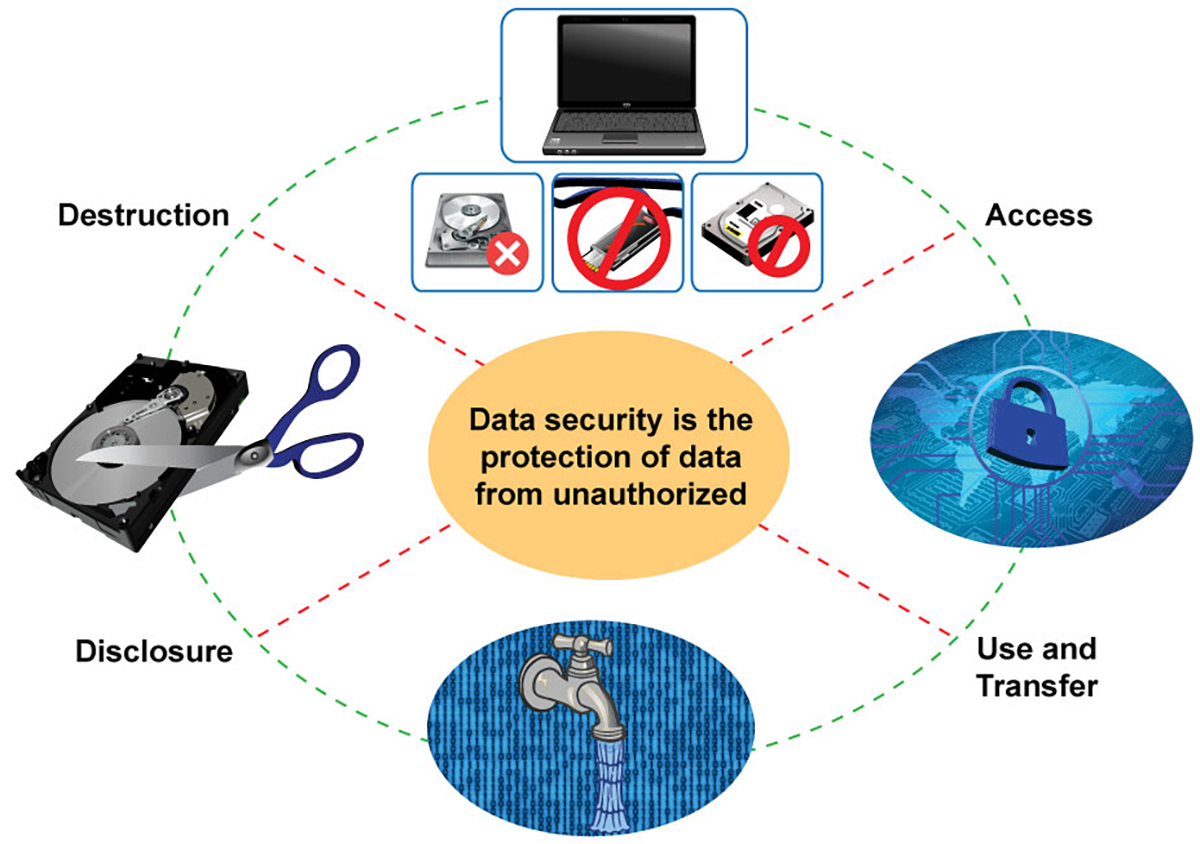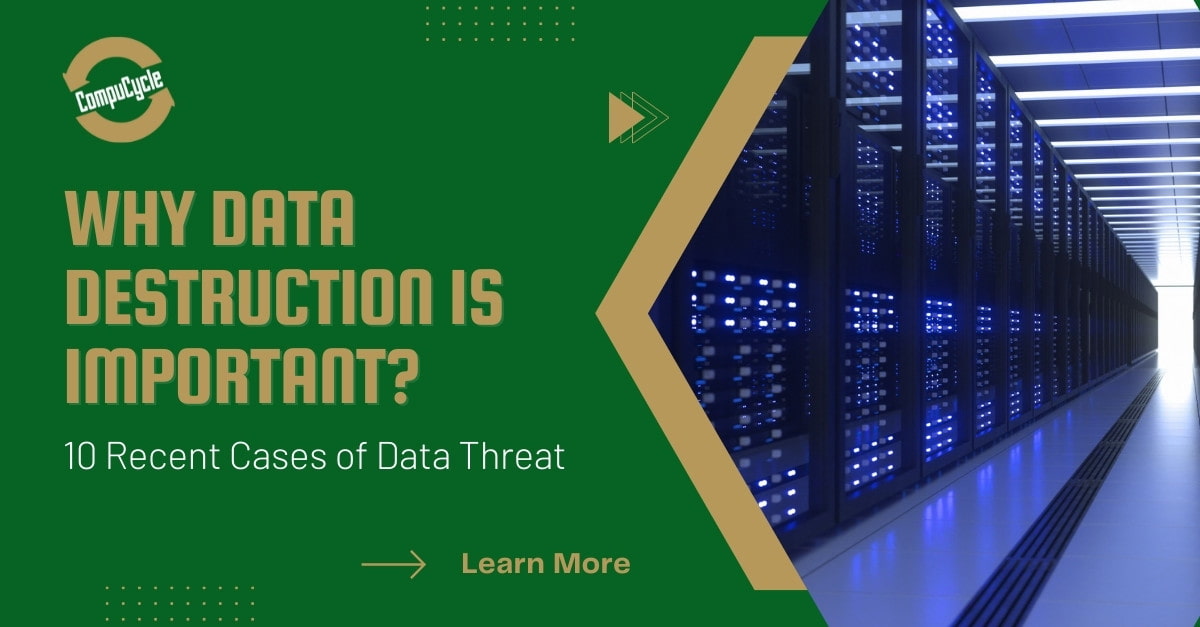Checking Out the Significance of Information Devastation in the Context of Computer Safety Solutions and Protecting Confidential Information
In an era where data violations are significantly usual, the value of reliable data destruction can not be overemphasized. When no much longer essential, Organizations needs to take on strict actions to make certain that delicate info is not only safeguarded during its lifecycle yet additionally emphatically removed. The approaches utilized for data eradication, coupled with compliance to lawful standards, play a pivotal role in preserving discretion and trust fund. The implications of these practices prolong beyond plain conformity, affecting a firm's track record and functional stability in the electronic market. What approaches can companies apply to improve their information devastation protocols?
Understanding Data Destruction
Information devastation is an important element of computer security that includes the irreversible removal of data from storage space devices to stop unapproved gain access to and prospective data violations. In a significantly electronic landscape, companies face increased risks associated with delicate information being improperly accessed or exploited. Efficient information destruction safeguards against these dangers, guaranteeing that personal dataâEUR" such as consumer details, intellectual property, and monetary recordsâEUR" can not be recuperated after disposal.
Comprehending the relevance of data destruction extends past plain conformity with governing and legal frameworks; it is vital for keeping business stability and depend on. When information is improperly taken care of or improperly ruined, the consequences can be severe, consisting of economic loss, reputational damage, and lawful responsibilities.

Techniques of Data Removal

One prevalent method is information wiping, which entails overwriting existing information with arbitrary patterns several times. This strategy renders the initial data irretrievable, making it a popular choice for organizations seeking to safeguard personal details.
An additional technique is degaussing, which makes use of a powerful electromagnetic field to disrupt the magnetic domain names on storage space tools, effectively removing the data. This approach is specifically reliable for magnetic media however is not applicable to solid-state drives.
Physical devastation is an additional durable method, including the shredding or squashing of storage space gadgets. This approach guarantees that information healing is practically impossible, making it suitable for extremely sensitive info.
Finally, file encryption can work as a complementary approach to information obliteration. By securing information prior to deletion, companies can add an additional layer of protection, guaranteeing that also if remnants are recouped, they continue to be inaccessible without the decryption secret. Each technique ought to be selected based upon the level of data level of sensitivity and the details safety and security needs of the company.
Legal Compliance and Data Safety
Organizations have to navigate an intricate landscape of lawful requirements associated with data safety and security, particularly after implementing techniques of data removal. Different policies, such as the General Data Defense Regulation (GDPR) and the Medical Insurance Transportability and Liability Act (HIPAA), impose stringent guidelines on just how organizations should handle and dispose of sensitive information. Failing to follow these policies can result in significant legal repercussions, consisting of substantial penalties and reputational check this damages.
Information damage processes have to be meticulously recorded to show compliance with applicable legislations and standards. This paperwork not just functions as evidence of adherence to lawful obligations but likewise shows a dedication to securing delicate details. Organizations must additionally develop clear plans concerning information retention and damage timelines, making sure that information is not held longer than necessary.

Moreover, routine audits and analyses of data devastation practices are necessary to preserve conformity and adapt to developing lawful frameworks (data destruction). By proactively addressing lawful requirements, companies can minimize risks connected with data breaches and demonstrate their commitment to information protection. Inevitably, prioritizing legal conformity in data devastation procedures is not simply a regulative commitment, however a fundamental element of a robust data safety method
Influence on Organization Track Record
The credibility of a business can be considerably influenced by its approach to data destruction and management. In today's digital landscape, where information violations can happen at any minute, the failure to effectively dispose of delicate information can bring about extreme consequences. Organizations that inadequately take care of data devastation threat revealing personal client details, which not only goes against privacy regulations however also wears down trust fund amongst customers and stakeholders.
A tarnished track record can result in lowered customer commitment, as clients end up being hesitant to engage with a business that has shown negligence in securing their data. Moreover, unfavorable attention surrounding a data breach can have a long lasting effect, as prospective clients may be hindered by the regarded absence of safety. This can cause a straight decrease in revenue and market share.
In addition, companies that focus on information destruction as component of their safety and security method can boost their online reputation by showcasing their commitment to guarding sensitive info. By taking on strict information management practices, organizations can not just minimize threats but likewise place themselves as trustworthy entities in their respective sectors, consequently navigate to this site reinforcing their general brand picture.

Ideal Practices for Secure Disposal
Carrying out ideal techniques for safe and secure disposal of data is crucial for alleviating risks connected with data violations and ensuring conformity with privacy regulations. Organizations ought to adopt a comprehensive information disposal policy that lays out procedures for both physical and digital data damage.
For physical data storage gadgets, such as hard disks, shredding or degaussing is advised to prevent information healing. Furthermore, companies need to keep a chain of guardianship documentation throughout the disposal process, guaranteeing accountability and traceability of disposed things.
For electronic data, making use of software program that abides by industry criteria for data wiping is essential. This software program must overwrite existing data multiple times, making recuperation essentially impossible. It is likewise important to verify the effectiveness of the information destruction procedure via audits or third-party assessments.
Training employees on safe and secure disposal methods adds one more layer of safety and security, as human error can usually result in data direct exposure. Regularly examining and upgrading disposal policies ensures alignment with progressing guidelines and technical innovations. By executing these best practices, companies can dramatically decrease the danger of unauthorized information accessibility and improve their overall data protection technique.
Verdict
Finally, information damage is an essential element of computer safety and security services More Help that makes sure the defense of secret information from unauthorized access. Executing effective methods of data eradication, adhering to lawful conformity, and acknowledging the influence on company reputation are important components of a thorough data safety and security technique. By embracing finest practices for safe and secure disposal, organizations can foster count on with customers and secure sensitive information, inevitably adding to an extra secure digital landscape.
In a period where data violations are significantly usual, the value of effective data destruction can not be overemphasized.Information destruction is a crucial component of computer system security that entails the long-term elimination of information from storage space gadgets to protect against unapproved gain access to and prospective information breaches. Organizations should additionally establish clear policies concerning information retention and destruction timelines, ensuring that data is not held longer than required.
By proactively resolving lawful needs, organizations can alleviate threats connected with information violations and show their dedication to information protection (data destruction). Inevitably, focusing on legal conformity in data devastation procedures is not just a regulative commitment, however a fundamental facet of a robust data protection strategy